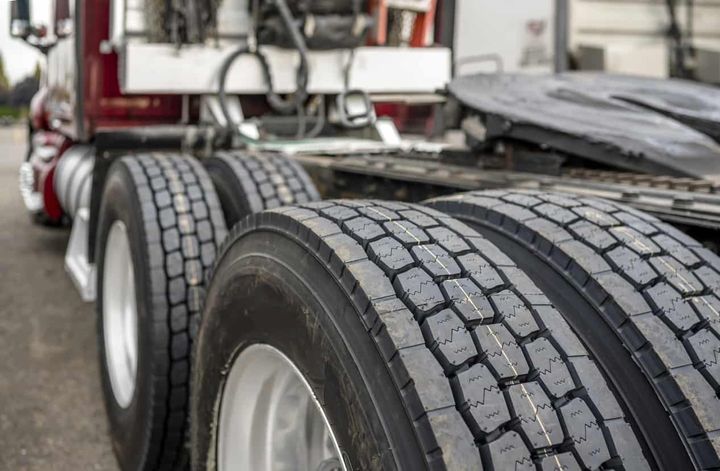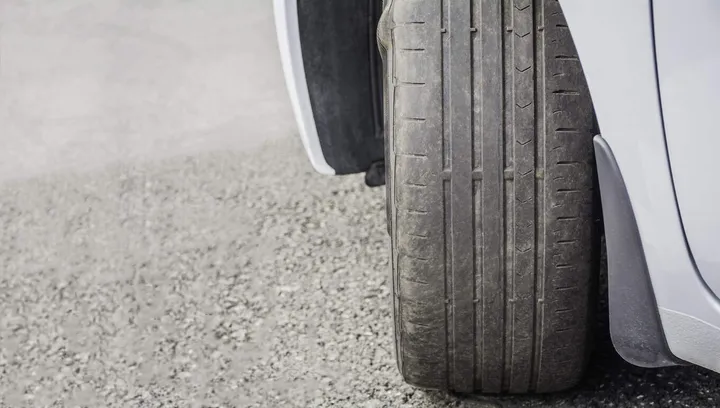


Maintaining your vehicle's tires in optimal condition is crucial for a smooth, safe, and efficient driving experience. One crucial aspect of tire maintenance is ensuring they are properly balanced. Unbalanced tires can lead to a range of issues, from vibrations and shaking to uneven wear, increased road noise, and even decreased fuel efficiency. In this comprehensive article, we'll delve into the symptoms of unbalanced tires, their causes, the importance of tire balancing, when to get your tires balanced, and the balancing process itself.

Tire imbalance refers to an uneven distribution of weight within the tire and wheel assembly. This imbalance can occur due to various factors, leading to vibrations and uneven forces that can negatively impact your vehicle's performance and handling.
Here are some common causes of tire imbalance:
| Cause | Description |
|---|---|
| Uneven Tread Wear Over Time | As tires age and accumulate mileage, the tread can wear unevenly, leading to an imbalance in the tire's weight distribution. |
| Damage from Potholes, Debris, or Curb Impacts | Hitting potholes, running over debris, or striking curbs can cause physical damage to the tire or wheel, resulting in an imbalance. |
| Improper Tire Installation or Balancing | If a tire is not properly mounted or balanced during installation, it can create an imbalance from the start. |
| Defective or Missing Wheel Weights | Wheel weights are small weights attached to the rim to counterbalance any heavy spots. If these weights are defective or fall off, it can cause an imbalance. |
| Issues with Suspension Components | Problems with suspension components, such as worn shocks or struts, can also lead to tire imbalance by causing uneven weight distribution or vibrations. |
Unbalanced tires can exhibit various symptoms, ranging from vibrations and shaking to uneven wear and increased road noise. Let's explore these symptoms in detail:
One of the most noticeable symptoms of unbalanced tires is vibration or shaking, which can be felt through various parts of the vehicle:
Through the Steering Wheel: Vibrations transmitted through the steering wheel can make it difficult to maintain a steady grip and can be particularly noticeable at higher speeds.
Through the Seat: Unbalanced tires can cause the seat to vibrate, leading to an uncomfortable and fatiguing driving experience, especially on longer trips.
Through the Floorboard: Vibrations felt through the floorboard can be a sign of tire imbalance, as the uneven forces are transmitted through the vehicle's suspension and chassis.
Unbalanced tires can lead to uneven and accelerated tread wear, resulting in distinct patterns on the tire's surface:
| Wear Pattern | Description |
|---|---|
| Cupping Pattern | A cupping pattern is characterized by scalloped or cupped sections around the tire's circumference, caused by the tire bouncing up and down as it rotates. |
| Feathering Pattern | Feathering refers to a pattern of smooth and rough areas across the tread, resembling the appearance of feathers. This pattern is caused by the tire's sideways movement as it rotates. |
If your vehicle tends to pull or drift to one side while driving on a straight, level road, it could be an indication of tire imbalance. The uneven weight distribution can cause the vehicle to favor the heavier side, making it challenging to maintain a straight line.
Unbalanced tires can also contribute to increased road noise, often described as a thumping or flapping sound:
Thumping Sound: A thumping sound can be heard as the heavier section of the tire makes contact with the road surface, creating an uneven impact.
Flapping Sound: A flapping or slapping noise may occur when the tire's sidewall flexes unevenly due to the imbalance, particularly at higher speeds or on smooth surfaces.
When your tires are out of balance, it creates additional rolling resistance, forcing your engine to work harder to maintain speed. This increased effort can result in decreased fuel efficiency, costing you more money at the gas pump over time.
Addressing tire imbalance through proper balancing is crucial for several reasons:
Prevents Premature Tire Wear: Unbalanced tires can lead to uneven and accelerated tread wear, reducing the lifespan of your tires and increasing replacement costs. Proper balancing helps ensure even wear and maximizes the life of your tires.
Improves Ride Quality and Handling: Balanced tires provide a smoother ride and better handling, enhancing your driving experience and safety. Vibrations and uneven forces can make the vehicle feel unstable or difficult to control, especially at higher speeds.
Reduces Strain on Suspension and Steering Components: The vibrations and uneven forces caused by imbalanced tires can put additional strain on your vehicle's suspension, steering, and other components, potentially leading to premature wear or damage. Balanced tires minimize this strain and help extend the life of these critical components.
Enhances Fuel Efficiency: By reducing rolling resistance, balanced tires can help improve your vehicle's fuel economy, saving you money at the gas pump. The increased effort required by the engine to overcome the imbalance can lead to higher fuel consumption.
Ensures Safe Driving: Unbalanced tires can compromise your vehicle's stability and handling, especially at higher speeds, increasing the risk of accidents. Properly balanced tires provide better control and responsiveness, contributing to a safer driving experience.
To maintain optimal tire performance and prevent potential issues, it's recommended to have your tires balanced in the following situations:
| Situation | Description |
|---|---|
| After Installing New Tires | New tires should be balanced during installation to ensure they are properly balanced from the start and to prevent any imbalance issues from developing. |
| During Regular Tire Rotations | Tire rotations are typically recommended every 5,000 to 8,000 miles, and it's a good practice to have your tires balanced during this service to address any imbalances that may have developed over time. |
| If Symptoms of Imbalance are Present | If you notice any symptoms of imbalance, such as vibrations, uneven wear, or increased road noise, it's important to have your tires balanced as soon as possible to prevent further issues. |
| After Hitting Potholes, Curbs, or Road Hazards | Hitting potholes, curbs, or other road hazards can potentially cause tire imbalance or damage. It's recommended to have your tires inspected and balanced after such incidents to ensure they are in proper condition. |
| Annually as Part of Routine Maintenance | Even if you don't notice any specific symptoms, it's a good practice to have your tires balanced annually as part of your vehicle's routine maintenance to prevent potential issues and ensure optimal performance. |
Tire balancing is typically performed by a professional technician using specialized equipment. There are two main methods:

In static balancing, the tire and wheel assembly is placed on a balancing machine that spins it to identify any heavy spots or imbalances. Small weights are then added to the wheel rim to counterbalance the heavy areas, ensuring the assembly is balanced when stationary.
While static balancing addresses imbalances when the tire is stationary, dynamic balancing takes into account additional factors that can cause imbalances when the tire is in motion:
Accounting for Tire Stiffness: Dynamic balancing considers the stiffness of the tire, which can cause imbalances as the tire flexes and deforms during rotation.
Accounting for Wheel Runout: This method also accounts for wheel runout, which refers to any deviation from a perfect circle in the wheel's shape, contributing to imbalances.
Adding Inner and Outer Weights: To address these additional factors, weights are added to both the inner and outer sides of the wheel rim for optimal balance during rotation.
The dynamic balancing process is more comprehensive and can provide a smoother ride by addressing imbalances that may not be detected by static balancing alone.
Maintaining properly balanced tires is essential for a smooth, safe, and efficient driving experience. By recognizing the symptoms of imbalance, understanding the causes, and addressing the issue promptly through professional tire balancing, you can extend the lifespan of your tires, improve ride quality and handling, reduce strain on your vehicle's components, and enhance fuel efficiency.
Regular maintenance and timely attention to any signs of imbalance will ensure optimal performance and prevent potential issues on the road. It's crucial to have your tires balanced during recommended intervals, such as after installing new tires, during regular tire rotations, or after hitting road hazards. Additionally, if you notice any symptoms of imbalance, such as vibrations, uneven wear, or increased road noise, it's important to have your tires balanced as soon as possible to prevent further issues.
By following these guidelines and working with a professional technician, you can maintain the proper balance of your tires and enjoy a smoother, safer, and more efficient driving experience.
Tires can become unbalanced due to normal wear and tear from driving, hitting potholes or curbs, losing wheel weights, manufacturing defects, or improper installation.
No, tire balancing and wheel alignment are different services. Balancing corrects weight imbalances in the tire/wheel assembly, while alignment adjusts the angles of the wheels so they make proper contact with the road.
It is recommended to have tires balanced every 6,000 to 8,000 miles or during every other tire rotation.
While possible with a portable wheel balancer, it is best to have tires balanced by a professional technician using a high-precision balancing machine for optimal results.
Balanced tires provide a smoother ride, improved handling, even tread wear, better fuel efficiency, and reduced strain on suspension components.
You can drive for 2-3 months with unbalanced tires, but the issue will worsen over time, leading to more severe symptoms and potential damage to other vehicle components.
Signs include vibrations in the steering wheel, seat, or floorboard, uneven tread wear, poor fuel economy, vehicle pulling to one side, and increased road noise.
Yes, unbalanced tires can decrease fuel efficiency by up to 10% as the engine has to work harder to overcome the uneven rolling resistance.
The average cost for tire balancing typically ranges from $30 to $100, depending on the service provider and any additional services required.
No, tire balancing cannot fix a bent wheel. A bent wheel needs to be repaired or replaced, as balancing alone cannot correct the physical deformation.

Sarah isn't your average gearhead. With a double major in Mechanical Engineering and Automotive Technology, she dived straight into the world of car repair. After 15 years of turning wrenches at dealerships and independent shops, Sarah joined MICDOT to share her expertise and passion for making cars run like new. Her in-depth knowledge and knack for explaining complex issues in simple terms make her a valuable asset to our team.







